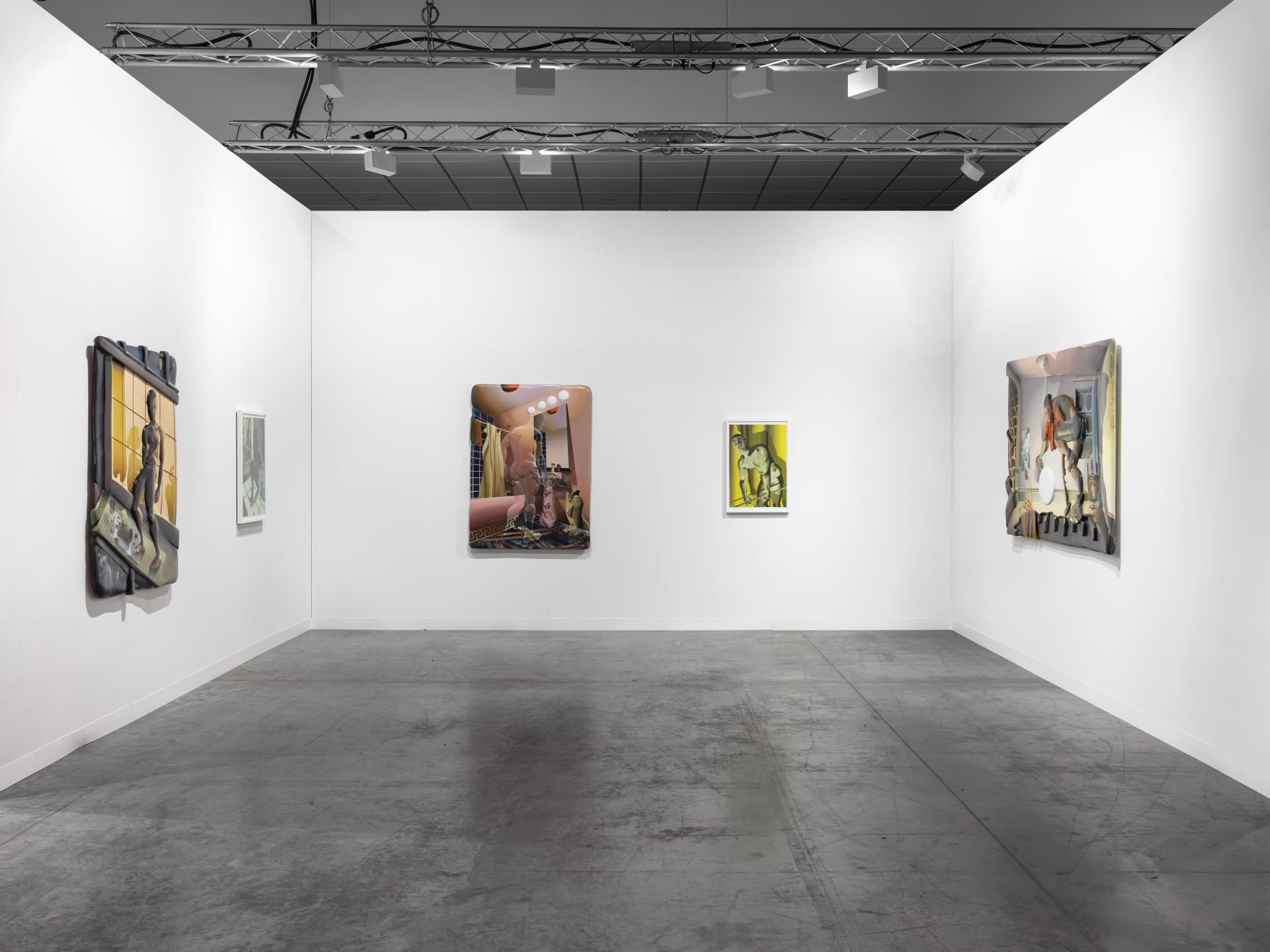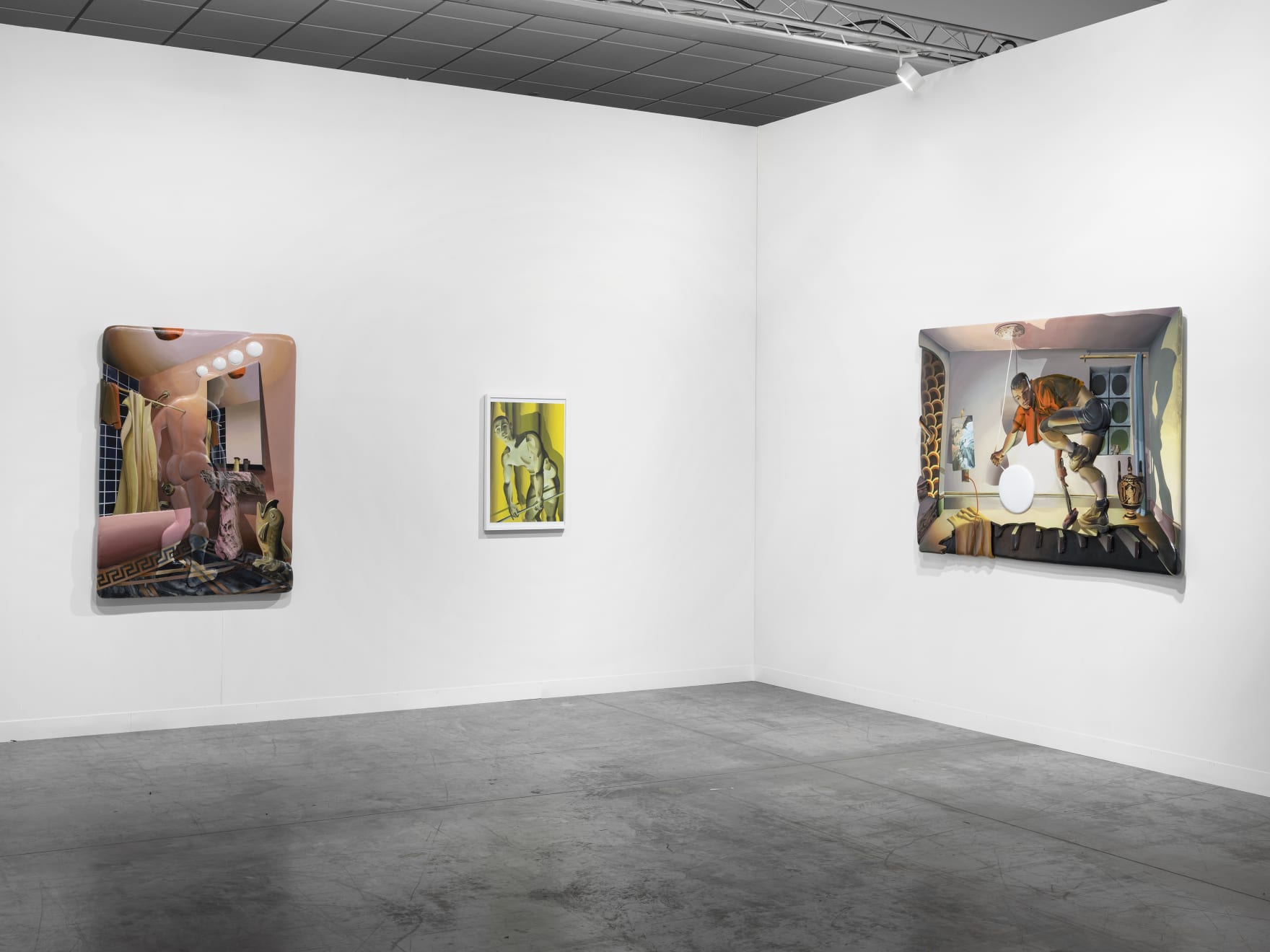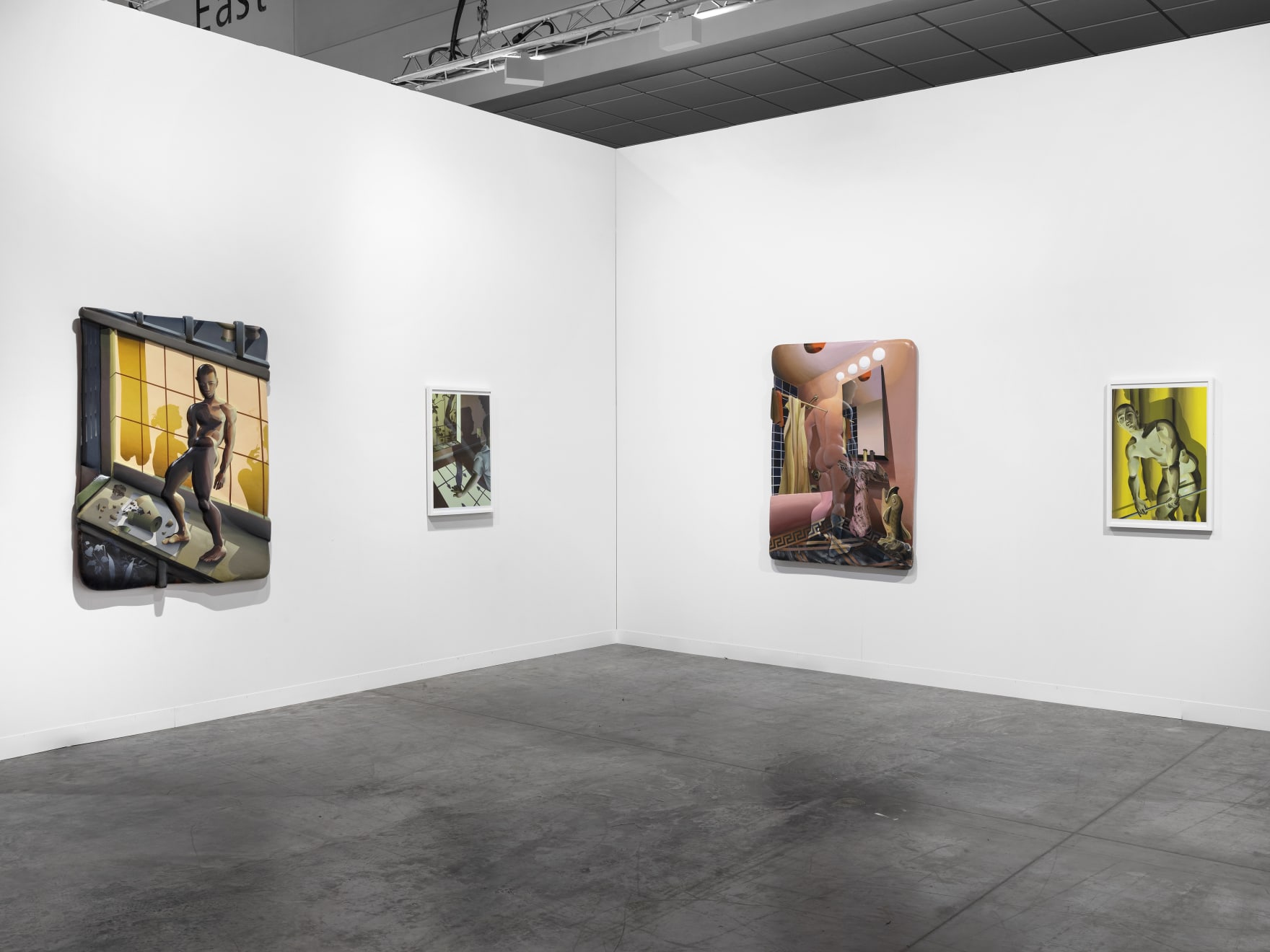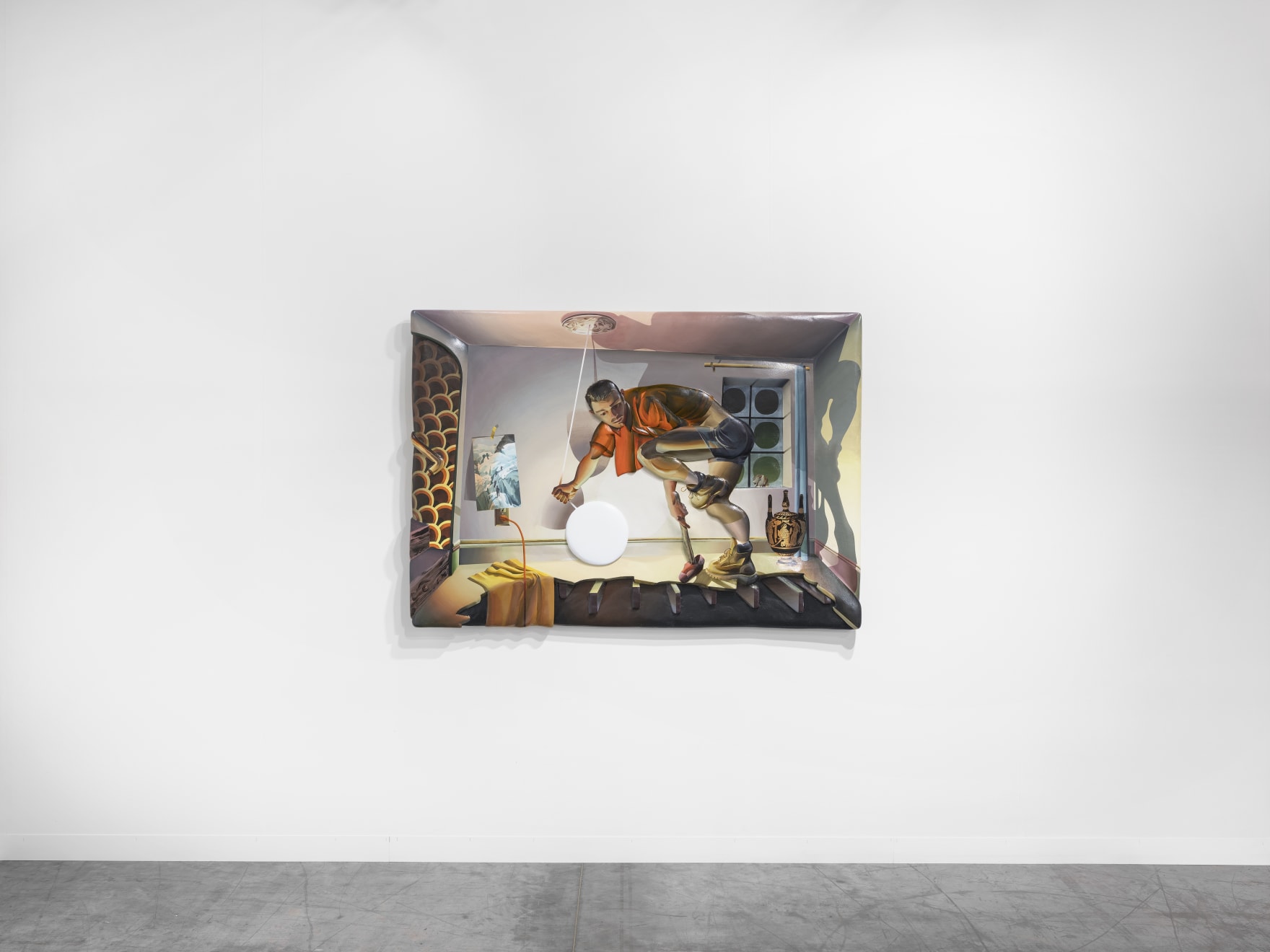Art Basel Miami Beach 2019: Kyle Vu - Dunn
For his first solo project at an art fair, entitled “After Hours”, New York based artist Kyle Vu-Dunn (b. 1990 Livonia, MI, USA) will display an entirely new body of work, comprised of large scale paintings executed as low reliefs, drawing on his complex rendering of romantic encounters, men working, evolving within complex architectural structures or simply accomplishing every day tasks.
Kyle Vu-Dunn’s paintings are far from ordinary, both in their pictorial style and in their shapes as carved painted low reliefs. Yet they aim at emphasizing situations of the every day whilst depicting mostly gay men interacting, as if the artist wanted to show us the normality of a queer person, who like anyone else, is entitled to a life full of ordinary moments—free of shame, persecution, or violence. Quietly political, the scenes illustrated are nothing out of the familiar, yet they encourage the viewer to reject his natural expectations when traditional art historical references come in when regarding a love scene, which here is always between two men instead of a heterosexual intercourse.
To create these multifaceted tableaux, Vu-Dunn who comes from a sculptural background, realizes a relief panel made from plaster-reinforced foam, fiberglass, and resin. Each relief is initially a graphite drawing, then a colored sketch before it gets carved and then painted with rich acrylic colors. For the artist, the process of painting on a three-dimensional format is more interesting than a traditional flat canvas, it forces him to take into consideration actual shadows and highlights from the relief, which then dictate the way the paint interacts with the environment and light. Drawing inspiration from artists such as Paula Rego’s convoluted domestic scenes, Philip Pearlstein’s twisted bodies or more broadly Richard Artschwager and David Hockney, Vu-Dunn perpetuates an American tradition of figurative painting by subverting its codes and creating a new realm into painting.
The contorted bodies cleverly intertwined within a complex rendering of textured architectural structures for the eye to meander and recompose the elements of the scene. The title for this presentation “After Hours” springs from the desire of the artist to explore the theme and technique of the chiaroscuro that he has until now only touched upon in some recent paintings. Elaborating on a running theme in his oeuvre, the actors in the compositions are looking away from the viewer, not directly engaging with their audience, putting us more in the position of a voyeur. The images are always utterly seductive and also timeless, as if taken from a 1950 gay gulp novel or perhaps photographed unexpectedly on an iPhone in a bar. Furthermore, setting is becoming increasingly important in the work, often presented are a mix of high and low, with old-world touches such as scenic wallpaper, chandeliers, or crown molding mixed with cheap over turned furniture, broken windows, etc. Inspiration is drawn from Italian 1970s Giallo films as well as vintage interior design photography. The scenic wallpaper is meant to add a surreal element, with the viewer not at first knowing if the landscapes represent a non-sequitur window with a view outside or simply a flattened image painted on the wall, emphasizing even more the dichotomy between the painted space and the carved object.
Moving away from the idea of "tenderness" or "intimacy" in the work, as this is a narrative that has been played out by critics and curators describing young gay painters, Vu-Dunn is looking to turn more into the humorous yet sexy and dangerous atmosphere of works such as Home Reno (with the naked boy straddling the sawhorse), to embrace the eroticism of his subjects while interjecting emotions not usually associated with the gay male body – romance, doubt, humor, solitude, melancholy in an attempt to confront the assessment that a lot of queer visual art is relentlessly sexual without content beyond sexuality.





